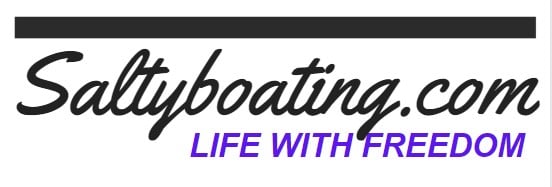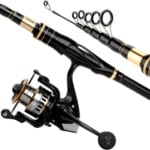So you’ve found yourself in a situation where you need to navigate through areas of restricted access, but you’re not exactly sure how to go about it. Don’t worry, we’ve got you covered. In this article, we will provide you with the essential guidelines to handle and navigate through these restricted areas safely and efficiently. Whether you’re dealing with a construction site, a private property, or any other restricted location, these guidelines will help you navigate with confidence and avoid any potential risks or conflicts. So let’s get started and explore the best practices for handling and navigating through areas of restricted access.
Overview
In our modern world, many organizations and facilities have areas that are designated as restricted access. These areas are important for various reasons, such as ensuring safety and security, protecting sensitive information, and maintaining privacy. Navigating through these areas requires adherence to specific guidelines and protocols to prevent unauthorized access and potential risks. In this article, we will delve into the guidelines for handling and navigating through areas of restricted access, covering topics such as obtaining authorization, understanding the importance of personal protective equipment (PPE), identifying access points, handling sensitive information, dealing with emergency situations, maintaining professional conduct, and continuous training and education.
Understanding Areas of Restricted Access
Defining Restricted Access
Restricted access refers to areas that are restricted or limited to certain individuals or groups. These areas are typically marked or secured to prevent unauthorized entry. The primary purpose of restricted access is to control who has access to specific locations or resources, ensuring safety, security, and the protection of sensitive information.
Types of Restricted Areas
Restricted areas can vary depending on the nature of the facility or organization. Some common types of restricted areas include:
-
High-security zones: These are areas that require the highest level of clearance and stringent security measures. Examples include government buildings, military bases, or research facilities working on classified projects.
-
Critical infrastructure zones: These areas are crucial for the functioning of essential services or systems, such as power stations, water treatment plants, or data centers. Unauthorized access to these areas can have severe consequences.
-
Medical or laboratory zones: These areas house sensitive materials, research, or patient information. Examples include pharmaceutical laboratories or hospital areas with restricted access to protect patients’ privacy and maintain the integrity of scientific research.
-
Industrial areas: Certain areas within industries, such as manufacturing plants, chemical facilities, or construction sites, may be restricted due to safety concerns or the presence of hazardous materials.
Importance of Following Guidelines
Safety and Security
One of the primary reasons for following guidelines in areas of restricted access is to ensure safety and security. These areas often pose risks, such as exposure to dangerous substances, potential accidents, or intentional harm. By adhering to guidelines, individuals minimize the chances of accidents, prevent unauthorized access, and protect themselves and others from harm.
Legal Consequences
Failure to comply with the guidelines for handling and navigating through areas of restricted access can lead to severe legal consequences. Unauthorized entry into restricted areas may result in criminal charges, fines, or even imprisonment, depending on the nature of the violation and applicable laws or regulations. Strict adherence to guidelines not only helps to maintain safety and security but also prevents individuals from getting involved in legal troubles.
Obtaining Authorization
Identifying Authorized Personnel
Before entering any area of restricted access, it is essential to verify and identify authorized personnel. This can be done by checking identification badges or permits issued by the relevant authorities. Authorized personnel are individuals who have undergone the necessary screening, training, and background checks to ensure their suitability for accessing restricted areas.
Required Documentation
In addition to identifying authorized personnel, certain documents may need to be presented before gaining access to restricted areas. These documents can include security clearances, permits, or certifications that demonstrate an individual’s suitability and qualifications for accessing the specific area. It is crucial to ensure that all necessary documentation is up to date and readily available when required.
Personal Protective Equipment (PPE)
Understanding PPE
Personal Protective Equipment (PPE) plays a vital role in ensuring the safety and well-being of individuals in areas of restricted access. PPE includes any equipment or gear designed to protect against potential hazards or risks. Examples of PPE include helmets, gloves, safety glasses, respirators, or protective clothing.
Appropriate PPE for Different Restricted Areas
Different types of restricted areas may require specific PPE based on the potential hazards present. For example, in a chemical plant, individuals may need to wear specialized suits, respirators, and goggles to protect against chemical spills or inhalation of toxic fumes. Understanding the specific requirements of each restricted area and ensuring the appropriate PPE is worn is crucial for personal safety and compliance with guidelines.
Navigating through Restricted Areas
Identifying Access Points
When navigating through restricted areas, it is essential to identify the designated access points. These access points are typically controlled entry and exit zones that are monitored or secured to restrict unauthorized access. Access points may include gates, turnstiles, swipe card access, or security checkpoints. It is crucial to only use authorized access points and not attempt to bypass or tamper with the designated entry systems.
Navigational Signage
Clear and visible navigational signage is an essential aspect of safely navigating through restricted areas. Signage should provide clear directions, indicate restricted access areas, highlight potential hazards, and give instructions on required actions or procedures. Following the provided signage ensures individuals stay on the authorized path and minimizes the risk of getting lost or inadvertently entering restricted zones.
Handling Sensitive Information
Security Clearance
In certain restricted areas, access may involve the handling of sensitive information. This can include confidential documents, patient records, or classified materials. Individuals who require access to such information will likely need to undergo security clearance procedures. Security clearances involve thorough background checks, vetting, and sometimes the signing of confidentiality agreements to ensure the protection and integrity of sensitive information.
Safe Handling and Disposal of Information
When handling sensitive information within restricted areas, it is crucial to follow strict protocols for its safe handling and disposal. This may include encryption, limited access controls, or secure storage measures to prevent unauthorized disclosure or theft of information. When information is no longer needed, proper disposal methods such as shredding or incineration should be followed to ensure it cannot be retrieved or misused.
Emergency Situations
Emergency Protocols
In the event of an emergency within a restricted area, it is essential to be familiar with the emergency protocols. These protocols outline specific actions to take in different emergency scenarios, such as fires, chemical spills, or medical emergencies. Emergency protocols may include evacuation procedures, emergency contact information, assembly points, and guidelines for requesting assistance or activating alarms.
Evacuation Procedures
In the case of an emergency that requires evacuation, it is crucial to know the designated evacuation routes and assembly points. Evacuation procedures may involve moving quickly and calmly to designated safe areas, avoiding elevators, and following instructions given by emergency personnel. It is essential to familiarize yourself with the evacuation procedures specific to the restricted area and regularly participate in evacuation drills or exercises to ensure preparedness.
Professional Conduct
Maintaining Professionalism
Within areas of restricted access, it is essential to maintain professionalism at all times. This includes adhering to dress codes, following organizational or facility policies, and respecting the privacy and confidentiality of individuals or information within the restricted area. Professional conduct ensures a safe and respectful environment, fosters trust among colleagues, and upholds the integrity and reputation of the organization or facility.
Respecting Privacy
In certain restricted areas, privacy is of utmost importance. This may apply to medical zones, research facilities, or high-security zones that deal with classified information. Respecting privacy means refraining from discussing sensitive information outside of the appropriate channels, maintaining confidentiality agreements, and not sharing personal or confidential information without proper authorization. Respecting privacy helps avoid potential breaches and maintains the trust and integrity of the restricted area.
Continuous Training and Education
Staying Updated with Regulations
To ensure adherence to guidelines for handling and navigating through areas of restricted access, it is crucial to stay updated with relevant regulations and policies. Regulations can change over time due to evolving security threats, advancements in technology, or improvements in safety protocols. Regularly reviewing and familiarizing oneself with updated regulations ensures compliance and helps individuals adapt to any changes or advancements in their respective fields.
Refresher Courses
Continuous training and education are essential for maintaining knowledge and skills related to navigating through restricted areas. Refresher courses should be undertaken periodically to ensure individuals remain aware of guidelines, protocols, and best practices. These courses may cover topics such as emergency response, PPE usage, handling sensitive information, or new developments in security measures. By investing in continuous training and education, individuals can stay competent and up to date with the latest practices and protocols in handling and navigating through areas of restricted access.
In conclusion, navigating through areas of restricted access requires strict adherence to guidelines and protocols. By understanding the importance of safety, obtaining authorization, using appropriate personal protective equipment, identifying access points, handling sensitive information securely, being prepared for emergency situations, maintaining professional conduct, and investing in continuous training and education, individuals can ensure they are well-prepared to handle and navigate through restricted areas. Following these guidelines not only contributes to personal safety and security but also helps in maintaining the integrity and effectiveness of the restricted areas and the organizations or facilities associated with them.





